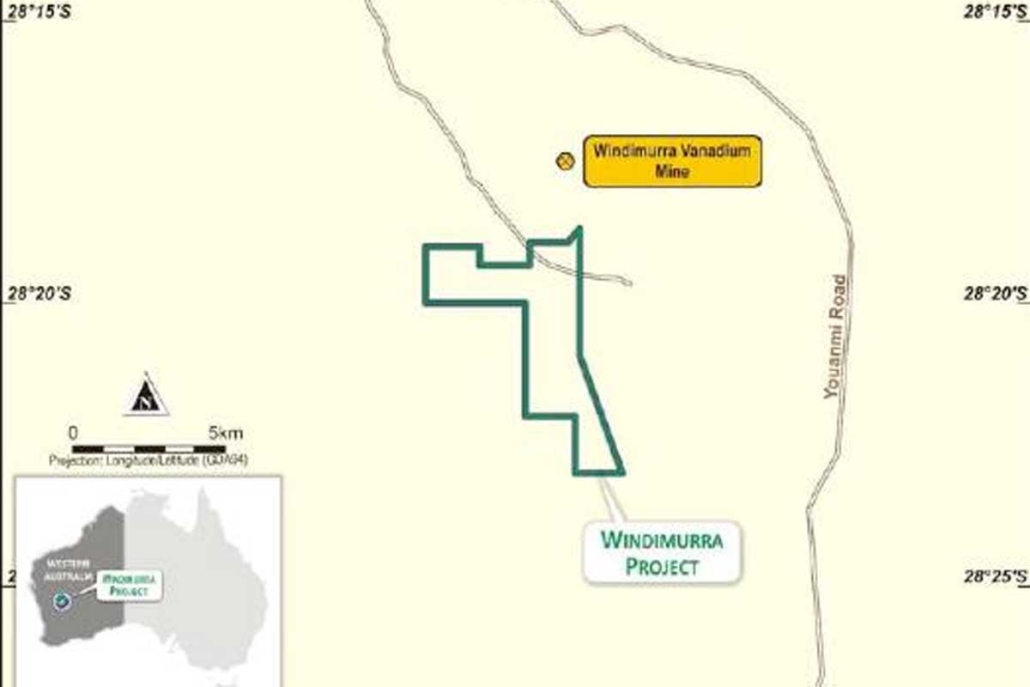Windimurra
The Windimurra project (100% owned) is situated in the Windimurra mafic igneous complex along strike from the Canegrass discovery (4.5m @ 1.3% Ni, 1.3% Cu and 0.10% Co from 251m).
Location and Tenure
The Windimurra project consists of a single exploration licence (E58/532) located 70km southeast of Mount Magnet, in the Murchison Region of Western Australia and covers an area of approximately 31km2 within the Murchison Mineral Field. Access to the project area is from Mount Magnet along the sealed Mount Magnet-Sandstone Road, then onto the well maintained, unsealed Youanmi road which passes through the northeast corner of the tenement. Minor station tracks and fence lines provide additional access.
Figure 1: Windimurra project location
Geology
Geology is dominated by the Windimurra Igneous Complex, which is a large differentiated layered ultramafic to mafic intrusion emplaced within the Yilgarn craton of Western Australia. The Windimurra mine sequence is in the Eastern Lobe intrusion on the eastern side of the Shepherds Discordant Zone (SDZ) and the vanadium mineralised layers within it occur at the top of the Lobe sequence. The Windimurra mine sequence dips westwards beneath the Western Lobe intrusion at about 35°, following the SDZ down dip to the west, and passing under E58/532 at depth. The surface trace of the SDZ and mine sequence on its eastern side outcrop for tens of kilometres to the north and south of the Windimurra mine. At its closest point, the outcropping SDZ lies about 500 metres east of the northeast corner of E58/532. A Ni-Cu-Co-PGE discovery by BlueBird Battery Metals to the south of the Windimurra project area has demonstrated the existence of potential for nickel/copper mineralisation within the project area.
Figure 2: Regional geology of the Windimurra mafic complex
Previous Exploration
From 2002 to 2015, the area covered by E58/532 formed part of a much larger tenement packages operated by Apex Minerals NL, Maximus Resources Ltd and Flinders Mines Ltd (Flinders). While the wider area had substantial work done, only a small amount overlaps the current tenement area.
Most recently (2010-2015), Flinders explored the area as part of their Canegrass Project, specifically their tenement E58/359, which overlaps part of E58/532. Of particular interest, Flinders collected 48 soil samples, as part of a targeted exploration program, that fall within E58/352. A discrete northeast trending coincident copper, nickel, chrome and vanadium anomaly was highlighted but was not followed up.
Prospectivity
The Windimurra Project overlays a portion of the layered, mafic-ultramafic Windimurra Igneous Complex (WIC). The WIC is the fourth largest layered mafic-ultramafic complex globally and the largest in Australia. The WIC is an ovoid-shaped, multilobed intrusion that is 85km long (north-south), 37km wide (east-west) with the lobes having a combined thickness of 11km.
The discovery of nickel-copper-cobalt-platinum group elements sulphide 10km south of GreenTech’s tenement, is considered encouraging for the grassroots magmatic nickel sulphide prospectivity for the Windimurra project. The vanadium potential of the WIC has already been established through the nearby Windimurra Mine.
GreenTech has identified exploration targets for vanadium and nickel-copper-cobalt-platinum group elements mineralisation within Greentech’s project tenement.
Exploration is focussed on reconnaissance and follow-up evaluation of targets and has comprised soil and rock chip sampling. This work will continue methodically aimed at identifying areas for drill testing.


